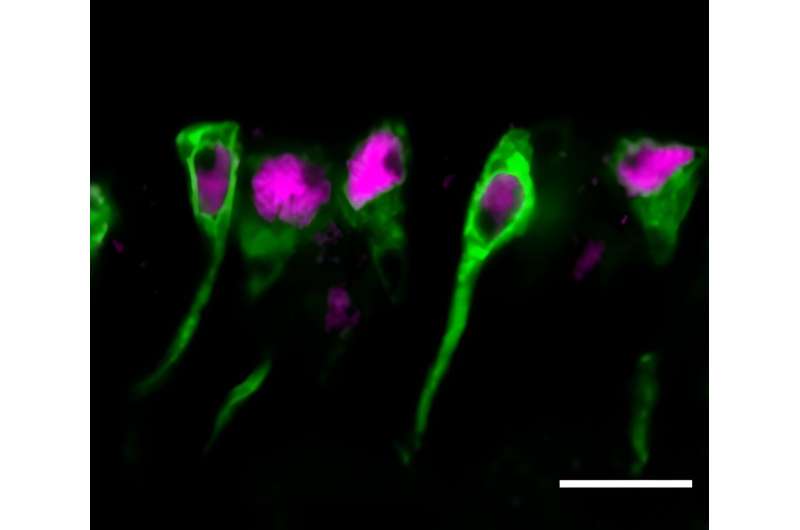Tapping into regeneration: New paths to repairing brain injury discovered in fruit flies
Originally published by Dionne Seah, Duke-NUS Medical School, on August 8, 2023
An image of neural stem cells (NSCs) from Drosophila (fruit fly) larval brains six hours after larval hatching. NSCs are labeled by a membrane marker (green) and a nuclear marker (magenta). Scale bar: 10µm. Credit: Mahekta Rajeshkumar Gujar
Researchers at Duke-NUS Medical School have discovered the regenerative capabilities of injured cellular protrusions from dormant neural stem cells (NSCs) in fruit flies. Published in Developmental Cell, the findings establish fruit fly NSCs as a powerful new model to unlock the secrets of neuronal regeneration that could one day lead to new therapies for repairing damage in aging human brains.
The study is the first to demonstrate that severed protrusions from fruit fly NSCs can regenerate. However, this capacity declines with age, mirroring the limited ability of mammalian neurons to regrow damaged connections as they grow older.
The researchers discovered that the golgi apparatus—an organelle that processes proteins and sends them to their destinations—is important for this regeneration capability in its role as the microtubule organizing center of dormant NSCs. Microtubules provide structure to cells, transport substances within cells, enable cell division and growth and allow neuron signaling in fruit flies.


Comments
Post a Comment